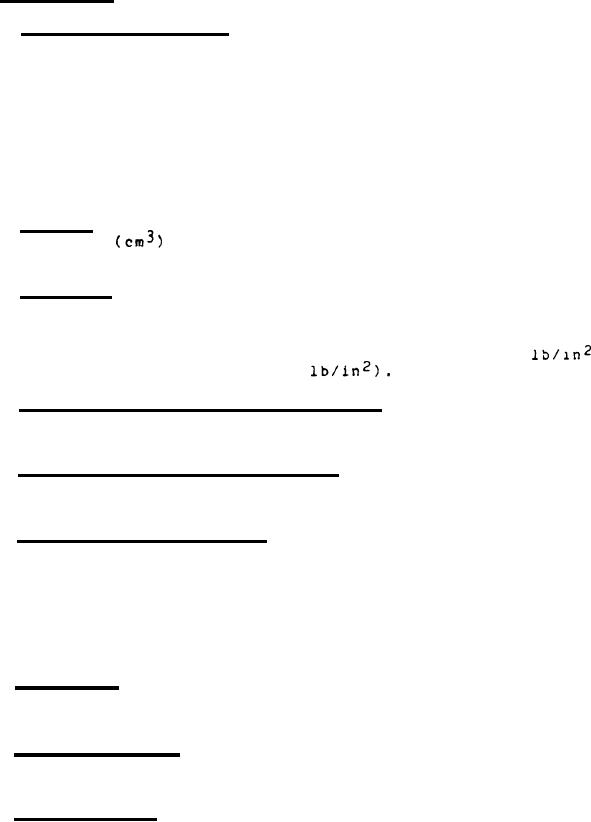 |
|||
|
|
|||
| ||||||||||
|
|  MIL-C-24604(SH)
3.3
Performance.
Volumetric expansion. First article inspection and production
3.3.1
cylinders shall not have residual expansion greater than 10 percent of
The first 25
the elastic expansion when tested as specified in 4.6.1.
production cylinders shall not have an elastic expansion that exceeds by
more than 10 percent the maximum acceptable value determined in the first
The standard deviation shall be calculated for elastic
article Inspection.
expansion for the first article cylinders and for the first 25 production
Subsequent production cylinders shall
cylinders as a combined sample.
not exceed the average elastic expansion for the combined sample by more
Elastic expansion is the total
than three times the standard deviation.
expansion less the residual expansion.
3.3.2 Leakage. The rate of leakage of the cylinder shall not exceed
one cubic centimeter
per hour at any temperature within the design
temperature range when tested as specified in 4.6.3.
Endurance. The cylinders, when tested as specified in 4.6.6,
3*3.3
The first cylinder shall meet 3.3.2 and shall
snail show no deterioration.
be capable of withstanding a hydrostatic burst pressure of not less than
The second cylinder shall
2.2 times room temperature operating pressure.
withstand a hydrostatic burst pressure of not less than 9450
(1.5
times 160F, operating pressure of 6300
Thermal-shock and pneumatic leakage. The cylinders subjected
3.3.4
to the thermal shock test of 4 6 5 shall show no deterioration and snail
subsequently pass the pneumatic leakage tests (see 4.6.3.1 and 4.6.3.2).
Vibration and pneumatic leakage. The cylinder shall meet
3.3.5
The cylinder shall
the vibration requirements of MIL-STD-167-1, type I.
show no deterioration upon completion of the test in 4.6.4.
Fragmentation resistance. The cylinder shall be resistant
3.3.6
The cylinder, when
to fragmentation when penetrated by a projectile.
tested as specified in 4.6.8, shall remain in one piece, and the greatest
dimension of the opening (cut plus tear) created by the projectile shall
not exceed the dimension of one hole (cut) created by the projectile by
more than 3 inches in any direction.
"Cutting" snail be considered as
the actual section of the cylinder cut by contact with the projectile,
and a "tear" shall be considered as any extension beyond the cut.
3.3.7 Soak cycle. After subjection to the soak cycle test (see
4.6.9), the cylinder shall withstand a hydrostatic burst pressure of not
less than 2.2 times room temperature operating pressure.
3.3.8 Pressure storage. The cylinder subjected to the pressure
storage test (see 4. 6.10) shall withstand a hydrostatic burst pressure
of not less than 2.2 times room temperature operating pressure.
3.3.9 Humidity cycle. The cylinder subjected to the humidity cycle
test (see 4.6. 11) shall subsequently pass the hydrostatic burst test at
a minimum pressure of 2.2 times the room temperature operating pressure.
6
|
|
Privacy Statement - Press Release - Copyright Information. - Contact Us |